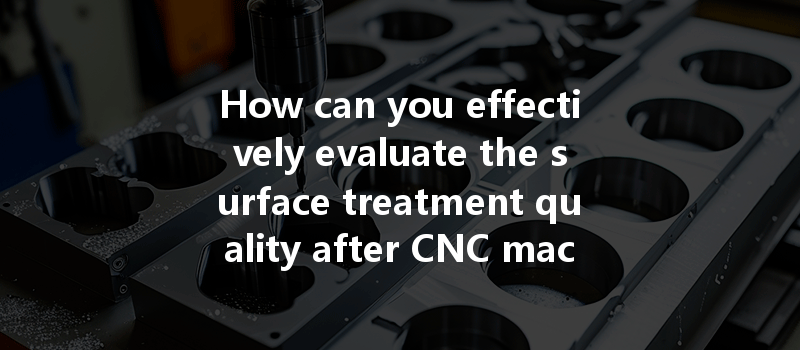Did you know that surface treatment can affect up to 80% of a material’s performance in real-world applications? In the world of CNC machining, ensuring the highest quality of surface finishing is not just a matter of aesthetic appeal; it is crucial for the effectiveness, functionality, and longevity of machined parts. By the end of this blog, you’ll understand the methods, techniques, and evaluation criteria to effectively assess surface treatment quality after CNC machining processes.
Understanding the Importance of Surface Treatment Quality
Before delving into the evaluative techniques, it’s essential to understand why the surface treatment quality is pivotal. Surface treatments improve the wear resistance, corrosion resistance, and overall durability of parts, significantly affecting their performance. For example, a poorly treated surface might lead to rapid degradation in a component operating in a high-stress environment.
Key Benefits of Quality Surface Treatments:
Common Surface Treatment Methods in CNC Machining
Before we can evaluate surface treatment quality, it’s vital to acquaint ourselves with the common methods used in CNC machining:
Evaluating Surface Treatment Quality
Step 1: Visual Inspection
The first line of defense in evaluating surface treatment quality is a thorough visual inspection. While it’s subjective, experienced professionals can identify various issues such as:
Step 2: Measuring Surface Roughness
Surface roughness measurements are crucial for quantifying the surface finish. Specialized instruments like profilometers can measure parameters such as:
These values are essential to compare with the specifications required for the manufactured part.
Step 3: Adhesion Testing
The bond strength between the surface treatment and the substrate is vital for its durability. Common adhesion tests include:
Step 4: Corrosion Resistance Testing
To ensure that the surface treatment functions appropriately in hostile environments, corrosion testing methods may include:

Step 5: Hardness Testing
Surface hardness significantly impacts wear resistance. Common tests include:
Step 6: Chemical Resistance Evaluation
Many applications require surfaces that can withstand exposure to various chemicals. Performing chemical resistance tests can involve:
Advanced Evaluation Techniques
X-ray Photoelectron Spectroscopy (XPS)
XPS analyzes surface chemistry, providing information on elemental composition and chemical state. This advanced technique can help in understanding how surface treatments bond at the molecular level, giving insights into their durability and performance.
Scanning Electron Microscopy (SEM)
SEM provides a high-resolution view of the surface morphology, allowing experts to observe microstructural features that are not visible with the naked eye. This can be particularly useful in identifying defects that affect surface treatment quality.
Fourier Transform Infrared Spectroscopy (FTIR)
FTIR can provide insights into the organic compounds used in surface treatments. This information is vital when assessing the compatibility of surfaces exposed to specific environments.
Case Studies: Successful Evaluations
Case Study 1: Aerospace Components
In aerospace, the longevity and performance of materials are life-critical. A manufacturer employed visual inspections, hardness testing, and corrosion resistance tests to ensure their aluminum components post-anodizing maintained industry standards. After implementing these evaluations, failure rates significantly decreased.
Case Study 2: Automotive Industry
An automotive parts manufacturer noticed premature failure in components due to improper surface treatment. By instituting a comprehensive evaluation process—including adhesion and roughness tests—they could identify and correct the surface finish, leading to significant improvements in product quality and fewer warranty claims.
Continuous Improvement in Surface Treatment Evaluation
Achieving and maintaining the highest quality standards in CNC machining and surface treatments requires continuous improvement:
Importance of Feedback Loops
A proper feedback mechanism allows manufacturers to improve processes continuously. Gathering data about the surface treatment quality’s performance in real applications can inform future machining processes and surface treatments, leading to innovative solutions.
In conclusion, evaluating the surface treatment quality after CNC machining is vital not only for ensuring aesthetic appeal but, more importantly, for enhancing functionality and longevity. By employing a combination of methods—from visual inspections and roughness measurements to advanced spectroscopic techniques—manufacturers can effectively assess and guarantee the performance of their products.
This blog aimed to illuminate the complexity of surface treatment evaluation and foster a deeper understanding of its significance in manufacturing. With the stakes so high in terms of performance and safety, investing time and resources into systematic surface treatment evaluation is not just wise—it’s essential.
Finally, as you consider the implications of effective surface treatment evaluation in your processes, remember that quality cannot be an afterthought; it must be ingrained in every step of your production journey. This blog serves as a crucial resource, guiding you toward enhanced surface treatment quality, leading to better performance and greater overall success in the competitive landscape of CNC machining.






